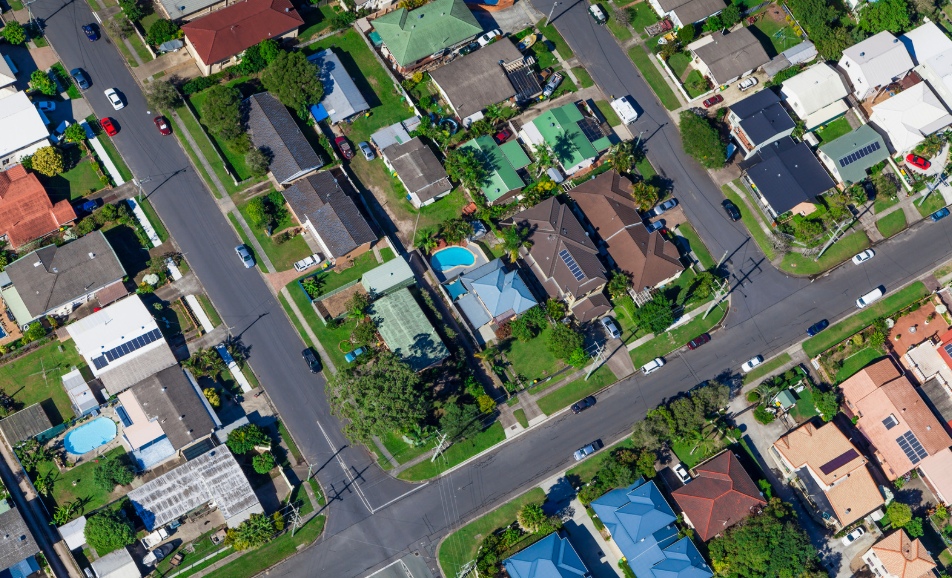Introduction to the Trend in Suburban Living
The real estate landscape has experienced significant transformations in recent years, notably influenced by the global pandemic and shifts in work dynamics. One of the most remarkable trends that have emerged is the heightened demand for suburban homes. Buyers are increasingly seeking properties that offer larger yards and more outdoor space. This trend has been largely fueled by the widespread adoption of remote work, which has altered the fundamental way we view our living and working spaces.
The Shift to Remote Work
The COVID-19 pandemic served as a catalyst for the remote work revolution. Many companies quickly adapted to a remote work model, enabling employees to perform their duties from home. This shift eliminated the necessity for a daily commute, making it less important for buyers to live close to their workplaces. As workers began to appreciate the flexibility of remote work, their priorities in housing changed dramatically. No longer confined to urban centers, buyers embarked on a quest for properties that offered amenities conducive to comfortable living and recreation.
The Allure of Larger Yards
One of the most significant factors driving the demand for suburban homes is the desire for larger yards. In densely populated urban areas, outdoor space is often limited to small balconies or community parks. In contrast, suburban properties typically offer expansive yards, providing families with room to relax, play, and engage in outdoor activities. This shift towards larger outdoor spaces is particularly appealing to families with children and pets, who benefit from the ability to play and explore safely within their own property boundaries.
Health and Well-Being Considerations
The increased interest in suburban living aligns with broader trends focusing on health and well-being. As people spent more time indoors during lockdowns, many recognized the mental health benefits of the outdoors. Access to nature, sunlight, and fresh air became more coveted as families sought ways to enhance their daily lives. Homes with gardens or outdoor entertainment areas provide an opportunity for physical activity and respite, further solidifying the appeal of suburban living.
Impact on Real Estate Prices
This growing demand for suburban homes comes with its implications on real estate prices. As more buyers flock to these areas, home prices have surged, often outpacing growth in urban markets. This increased competition has created a seller’s market in many suburban locations, driving up property values. As a result, some families are finding it challenging to enter the suburban housing market, which continues to evolve as demand escalates. Real estate agents and prospective buyers alike are adapting to this new normal, reshaping their strategies to navigate the competitive landscape.
The Perspective of Urban Dwellers
While suburban properties are gaining traction, it’s essential to recognize that urban living continues to appeal to many individuals, particularly younger professionals and those without children. City life offers convenience, cultural activities, and a variety of entertainment options that can be less accessible in suburban areas. However, as the trend towards remote work continues, some urban dwellers have also started to explore suburban options, seeking a better balance between their professional and personal lives. This dynamic creates a diverse real estate market where preferences and priorities can differ widely.
Conclusion
In conclusion, the trend towards increased demand for suburban homes with larger yards reflects a fundamental reshaping of lifestyle preferences influenced by remote work, health considerations, and the desire for more outdoor space. This ongoing transition is affecting real estate markets across the country, with rising prices and shifting buyer demographics. As both urban and suburban living experiences changes, it will be interesting to observe how this market continues to adapt in response to the ever-evolving needs and desires of homebuyers.
FAQs
What are some benefits of living in a suburban area?
Living in a suburban area offers several advantages, such as larger homes with more outdoor space, a quieter environment, generally lower living costs, and access to good schools and community amenities.
How has the remote work trend affected real estate values?
The remote work trend has contributed to increased demand for suburban homes, leading to rising property values in these areas as more buyers seek larger living spaces suited for both work and leisure.
Will the demand for suburban homes continue to rise?
While it is difficult to predict the future with certainty, the ongoing emphasis on remote work and lifestyle changes suggests that demand for suburban homes may remain strong for the foreseeable future.
Are there any downsides to moving to the suburbs?
Some potential downsides include longer commute times if working in urban centers, less access to cultural and entertainment options available in cities, and the potential for decreased public transportation options.
How can buyers navigate the competitive suburban real estate market?
Buyers can navigate the competitive market by obtaining pre-approval for mortgages, working with knowledgeable real estate agents, being flexible with their purchase criteria, and acting quickly when they find a suitable property.

